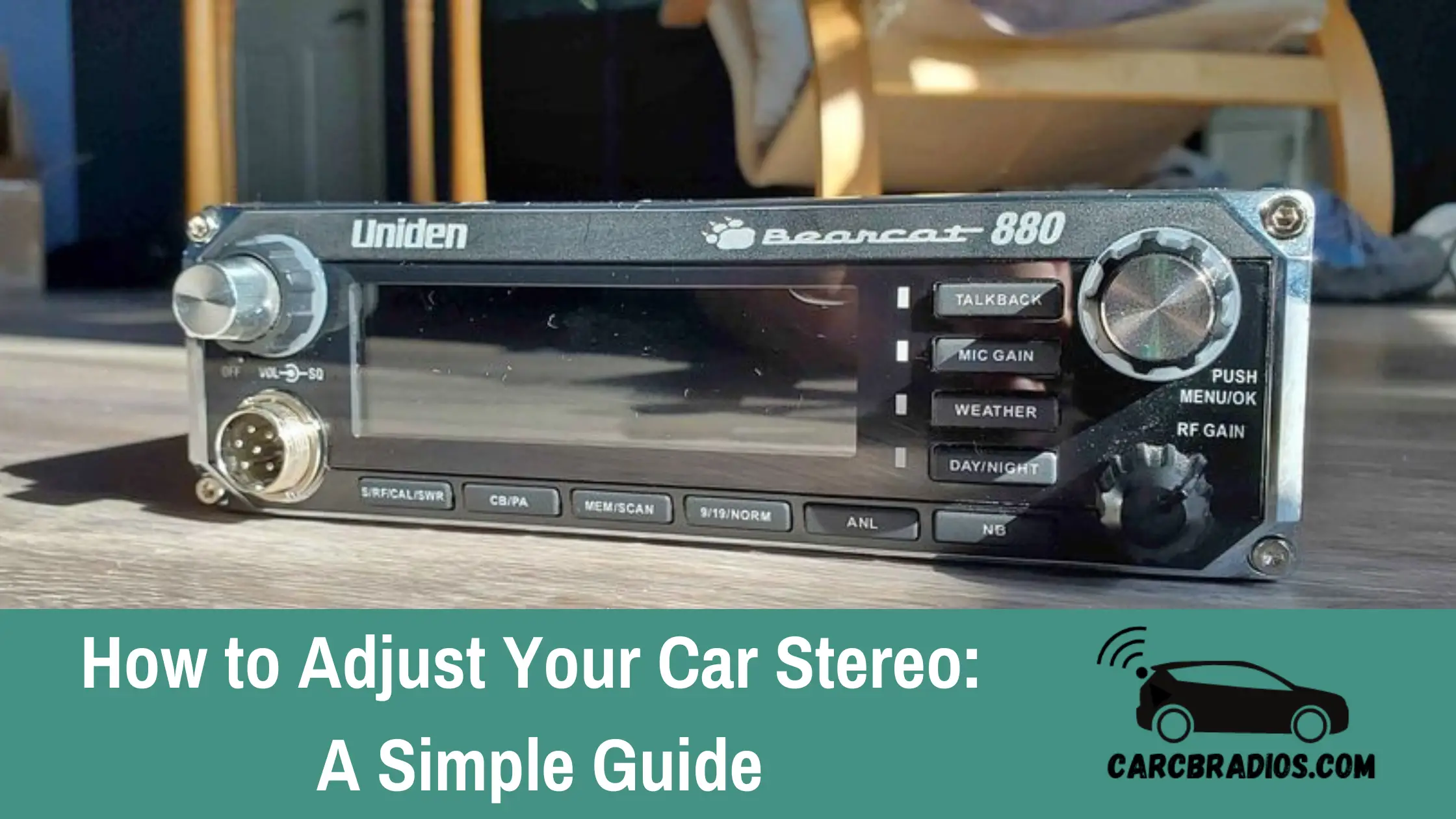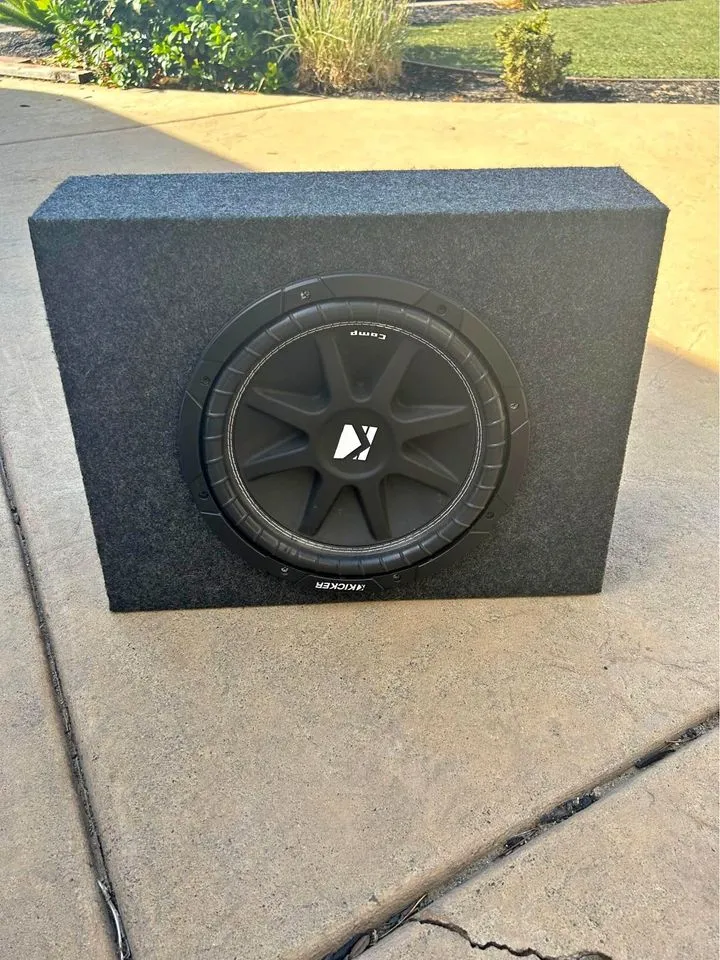By: Jeremy Neisser
Overview
In this article, I will provide tips and suggestions for maximizing the potential of your car stereo system. Tuning and adjusting your audio system can make a world of difference in how it sounds. Here are some of our best tips and advice for improving the performance of your car stereo system.
How to Adjust Your Car Stereo: Our Car Audio Tuning Guide
Our car audio tuning guide is a comprehensive resource for maximizing the potential of your existing or future car stereo system. We also point you to some of our other articles for more in-depth sound tweaking.

Step 1 - Check Speaker Phase
Whether you have a Pioneer, Alpine or Kenwood, It's important to check all your speakers, even if your system was professionally installed. The speakers in your system should all be firing in phase. If they're not, you lose bass response, which makes your system sound anemic and unfocused.
To determine if a pair of speakers in your vehicle are in phase, listen to some bass-heavy music with your stereo's balance control all the way to one side.
Now return the balance control to the center — you should hear significantly more bass.
If you don't, your speakers are out of phase. Switch the positive and negative leads on a single speaker, and try again. If you hear more bass, leave it!
Use this method to check the front and rear speakers independently.
The same suggestion holds true for your subwoofer system. If your amp has a phase switch, try it. If the bass increases, you're good! If it doesn't or that doesn't help, reverse the speaker wires going to your sub and listen for a change in bass response.
Again, if it gets louder, leave it alone.
Another tip — always make sure that multiple subs are wired in phase with each other.
Step 2 - Tune Your Stereo and Speakers
Now that you know your speakers are all working together, adjust the stereo settings so that they give you a balanced sound.
Start with the EQ, tone controls, balance, and fade all set to the middle or flat.
Turn your subwoofer off.
Set the left-to-right balance

Tune your receiver's fade control until the music comes out of the front speakers only. Then adjust the left-to-right balance to your satisfaction.
Note where that setting is. Then do the same with the rear speakers. If the balance settings for the front speakers and the rear speakers are the same, leave them. If they're different, set the balance to a compromise between the two settings.
Set the front-to-rear fade Adjust your receiver's fade control all the way to the front again. Slowly bring up the rear volume with the fade control until your music has a pleasing depth, but still sounds like it's generally coming from in front of you.
Some receivers let you control the tone differences between the front and rear speakers. If yours can do this, tune your rear speakers to have a little less treble than your front speakers.
This ensures that the music sounds like it's coming from the front, even when the volume is high. (Human hearing locates high notes better than low notes.)
Listen to the tonal qualities of your music Now sit and listen to some of your favorite music for a few minutes. Play a mix of musical styles and artists. If you have any static or issues, you may have a bad ground.
Are the high notes, the mid-range notes, and the low notes all there?
Are they in balance? Determine what, if anything, is wrong with the tone before trying to adjust it.
Step 3 - Adjusting Your Subwoofer
It may be tempting to crank up the bass on your receiver, especially if you've just installed a sub. But it'll sound better if you take the time to balance the subwoofer's bass with your other speakers.
Again, start with the stereo's equalizer set flat — all tone controls at "0" and no EQ curve engaged.
With the subwoofer off, turn some familiar music up to a moderate listening level, then slowly increase the subwoofer output until you hit the "sweet spot" — the place where the bass really kicks in without overwhelming the rest of the music.

If the bass sounds like it's coming from behind you, lower the subwoofer amp's crossover point to "de-localize" the bass. If your stereo and amp don't have adjustable crossovers, try repositioning the subwoofer.
For example, if the subwoofer is firing toward the rear, turn it around so it fires forward or sideways.
Remember to check your phase again when the sub is in its final position.
When you're finished, all the bass notes should punch out at an even volume level. If you hear bass notes dropping out or booming, check your phase and experiment with different crossover points until it's smoothed out.
Once your sub is tuned properly, you can use your receiver's equalization controls to make minor adjustments.
You may be interested in: Car Stereo Wattage - Guide
Choosing the Right Amount of Bass & Treble
When you get around to playing with the EQ, remember to make small adjustments where you need them most.
Frequently Asked Questions
What are the best equalizer settings for car audio?
The best equalizer settings for your car audio depend on your personal preference and the type of music you listen to. However, a good starting point is to set the bass to around 60 Hz, the midrange to around 500 Hz, and the treble to around 10 kHz. From there, you can adjust the levels to your liking.
How do I tune my car speakers?
To tune your car speakers, start by adjusting the equalizer settings as mentioned above. Then, adjust the balance and fader controls to ensure that the sound is evenly distributed throughout the car. You can also adjust the crossover settings to ensure that the right frequencies are being sent to the right speakers.How can I get the best sound from my car stereo?
To get the best sound from your car stereo, start by investing in high-quality speakers and amplifiers. Then, make sure that the speakers are properly installed and that the wiring is done correctly. Finally, adjust the equalizer settings, balance, and fader controls to your liking.
What is the optimal way to adjust my car stereo?
The optimal way to adjust your car stereo is to start with the equalizer settings, then adjust the balance and fader controls, and finally adjust the crossover settings. It's important to take your time and make small adjustments until you find the perfect sound.
How do I optimize my car audio system?
To optimize your car audio system, start by investing in high-quality components and ensuring that they are properly installed. Then, adjust the equalizer settings, balance, and fader controls to your liking. You can also consider adding sound deadening material to reduce road noise and improve sound quality.
What are some professional tips for car audio tuning?
Some professional tips for car audio tuning include starting with the equalizer settings, making small adjustments, and taking your time. It's also important to listen to a variety of music genres to ensure that the sound is balanced. Finally, don't be afraid to experiment with different settings until you find the perfect sound.

Hi & Welcome!
My name is Jeremy and I have been an avid car nut for many year. My first car was an 1987 Honda CRX. I put in my first Kenwood stereo, amp, 2 10" JLs and a CB Radio in it and have been an avid user of CBs and car radios for years. I'll do my best to share my tips, information and thoughts to help you with whatever question you might have, ABOUT ME
After I graduated from High School, I worked 5 years are Radio Shack and 3 years at Circuit City answering questions and helping customers with various electronics questions.
